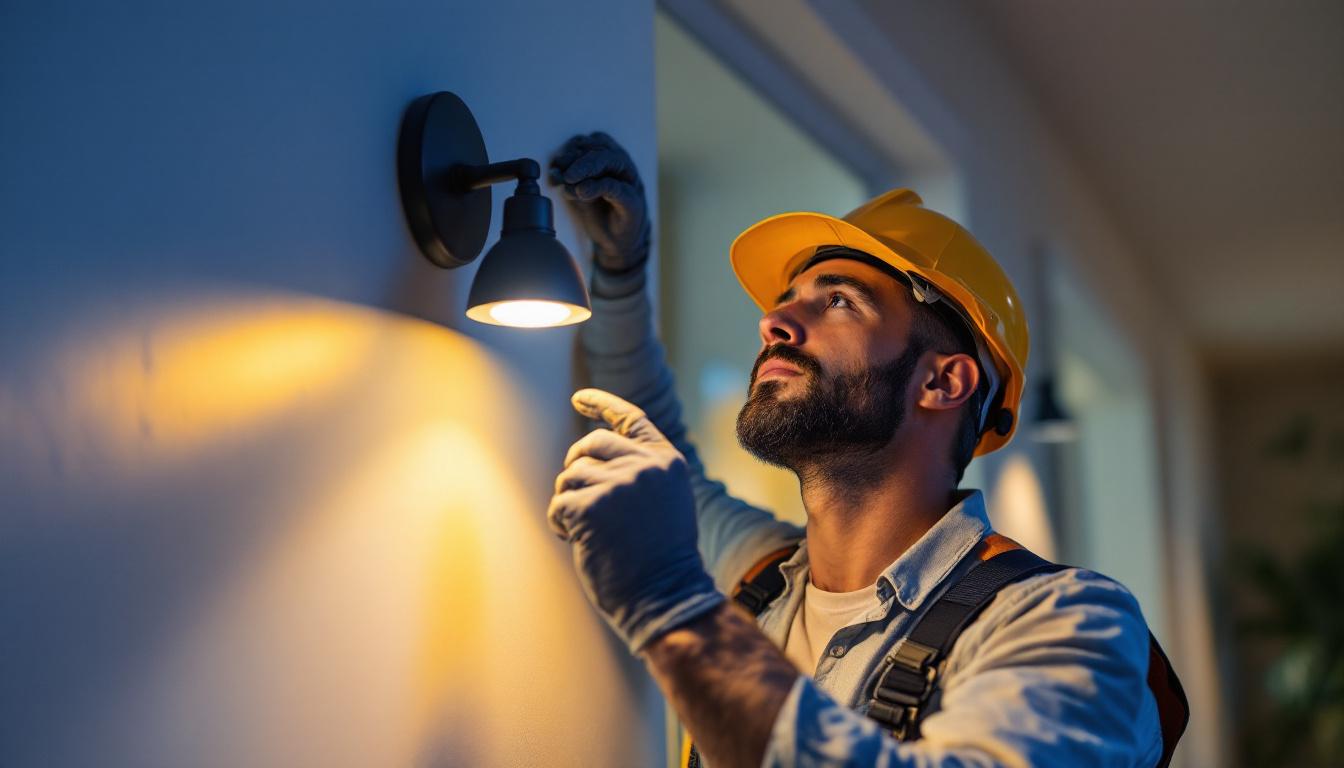
The evolution of the lighting industry has been marked by significant advancements in technology, design, and efficiency. At the heart of this evolution lies the concept of brightness, which has undergone a transformation in how it is measured and perceived. Understanding the light bulb brightness scale is essential for lighting contractors and professionals in the field, as it influences everything from product selection to installation practices.
Light is measured in various ways, but the most common units used to describe brightness are lumens and watts. While watts measure energy consumption, lumens quantify the amount of visible light emitted by a source. This distinction is crucial for contractors who aim to provide efficient and effective lighting solutions. Understanding these measurements not only aids in selecting the right lighting for a space but also contributes to energy conservation efforts, as consumers become more aware of how their choices impact both their electricity bills and the environment.
Traditionally, many consumers equated wattage with brightness, leading to confusion when transitioning to newer lighting technologies. For example, an incandescent bulb may produce around 800 lumens while consuming 60 watts. In contrast, LED bulbs can produce the same amount of light while using significantly fewer watts, often around 10 to 12. This shift emphasizes the importance of focusing on lumens rather than watts when selecting lighting products. Furthermore, as technology advances, more lighting options are emerging, such as compact fluorescent lamps (CFLs) and smart bulbs, each with unique energy profiles and lumen outputs. These innovations are reshaping the landscape of lighting choices available to consumers, making it essential to stay informed about the latest developments in the field.
The brightness scale has evolved to provide a clearer understanding of how much light a bulb emits. The American Lighting Association and other industry organizations have developed guidelines that help consumers and professionals alike make informed decisions. For instance, a standard 60-watt incandescent bulb is often replaced with an LED bulb that produces approximately 800 lumens, making it easier to compare different types of bulbs. Additionally, the color temperature of light, measured in Kelvin (K), plays a significant role in how we perceive brightness. Warmer light, around 2700K, creates a cozy atmosphere, while cooler light, around 5000K, mimics daylight and can enhance focus and productivity. This understanding of both lumens and color temperature is essential for creating the desired ambiance in residential and commercial spaces alike, allowing for tailored lighting solutions that meet specific needs and preferences.
Advancements in lighting technology have revolutionized the way brightness is perceived and utilized. From incandescent to fluorescent and now to LED, each technology has brought unique characteristics that influence brightness and efficiency.
Incandescent bulbs, once the standard for household lighting, are gradually being phased out in favor of more energy-efficient options. The introduction of LED technology has not only improved brightness but has also extended the lifespan of light bulbs significantly. This shift has prompted contractors to adapt their practices and educate clients on the benefits of modern lighting solutions. Moreover, the environmental impact of switching to LEDs cannot be overstated; these bulbs consume up to 80% less energy than traditional incandescent bulbs, leading to reduced carbon footprints and lower electricity bills for consumers. As more people become aware of these advantages, the demand for LED lighting continues to rise, pushing manufacturers to innovate further and create even more efficient products.
Another factor that influences the perception of brightness is color temperature, measured in Kelvin (K). Warmer light (lower Kelvin values) can create a cozy atmosphere, while cooler light (higher Kelvin values) tends to feel brighter and more energizing. Understanding how color temperature interacts with brightness is essential for contractors when designing lighting schemes that meet the needs of their clients. Additionally, the psychological effects of different color temperatures play a crucial role in how spaces are experienced. For instance, warmer tones are often preferred in residential settings, as they promote relaxation and comfort, making them ideal for living rooms and bedrooms. In contrast, cooler tones are frequently used in workspaces and retail environments to enhance focus and productivity, showcasing the importance of thoughtful lighting design in various contexts.
Different environments require varying levels of brightness, and understanding these needs is critical for lighting contractors. Whether it’s residential, commercial, or industrial settings, the application of brightness plays a vital role in achieving the desired ambiance and functionality.
In residential spaces, the brightness scale often varies based on the room and its intended use. For example, kitchens and workspaces typically require brighter lighting to facilitate tasks, while bedrooms may benefit from softer, more ambient light. Contractors must consider these factors when recommending lighting solutions to homeowners. Additionally, the use of dimmers and smart lighting systems has become increasingly popular, allowing residents to customize brightness levels according to their mood or the time of day. This flexibility not only enhances comfort but also contributes to energy savings, as homeowners can adjust lighting to suit their needs without wasting electricity.
In commercial settings, brightness can significantly impact customer experience and productivity. Retail environments often use brighter lighting to highlight products and create an inviting atmosphere. Conversely, office spaces may require adjustable lighting to accommodate various tasks and preferences. Understanding the specific needs of each space allows contractors to tailor their lighting designs effectively. Furthermore, incorporating natural light through large windows or skylights can enhance the brightness of a commercial space while promoting a healthier work environment. Studies have shown that exposure to natural light can improve employee morale and productivity, making it an essential consideration for contractors when designing office layouts.
As the world becomes more conscious of energy consumption and environmental impact, the lighting industry has responded with a focus on energy-efficient solutions. The brightness scale plays a crucial role in this transition, as it helps consumers understand the relationship between brightness and energy use. By utilizing this scale, consumers can make informed decisions that not only enhance their living spaces but also contribute to a greener planet.
Energy Star ratings provide a benchmark for energy efficiency in lighting products. These ratings help contractors and consumers identify bulbs that not only meet brightness requirements but also minimize energy consumption. By promoting Energy Star-rated products, contractors can contribute to sustainability efforts while offering clients effective lighting solutions. Furthermore, the Energy Star program continually updates its criteria to reflect advancements in technology, ensuring that consumers have access to the most efficient products available. This dynamic approach encourages manufacturers to innovate, leading to the development of even more energy-saving lighting technologies.
Investing in energy-efficient lighting can lead to significant long-term cost savings. Although LED bulbs may have a higher upfront cost compared to traditional incandescent bulbs, their longevity and lower energy consumption make them a more economical choice over time. Educating clients on the financial benefits of selecting energy-efficient lighting options is essential for contractors aiming to build lasting relationships with their customers. Additionally, many utility companies offer rebates or incentives for the installation of energy-efficient lighting, further enhancing the appeal of these products. By leveraging these financial incentives, contractors can not only help clients save money but also encourage a shift towards more sustainable practices in their communities.
Moreover, the environmental benefits of energy-efficient lighting extend beyond mere cost savings. By reducing energy consumption, these lighting solutions contribute to lower greenhouse gas emissions, helping to combat climate change. The shift towards energy-efficient lighting also supports the broader goal of reducing reliance on fossil fuels, promoting a cleaner and more sustainable energy landscape. As awareness of these issues grows, consumers are increasingly seeking out products that align with their values, making energy-efficient lighting not just a smart choice for the wallet, but also for the planet.
The lighting industry continues to evolve, with emerging technologies and trends shaping the future of brightness measurement and application. Staying informed about these trends is vital for contractors who wish to remain competitive and provide cutting-edge solutions.
Smart lighting technology is gaining traction, allowing users to control brightness and color temperature through mobile apps and voice commands. This level of customization enhances user experience and offers new opportunities for contractors to integrate smart solutions into their projects. Understanding the intricacies of smart lighting can set contractors apart in a rapidly changing market.
Human-centric lighting focuses on creating environments that support well-being and productivity. This approach considers the biological effects of light on human health and aims to optimize brightness levels according to natural circadian rhythms. As awareness of the importance of lighting on health grows, contractors will need to adapt their designs to incorporate human-centric principles.
The evolution of the light bulb brightness scale reflects broader changes in the lighting industry, driven by technological advancements, energy efficiency, and a deeper understanding of human needs. For lighting contractors, staying informed about these developments is essential for providing effective and sustainable lighting solutions.
As the industry continues to evolve, embracing new technologies and trends will be crucial for success. By focusing on lumens rather than watts, understanding the impact of color temperature, and promoting energy-efficient products, contractors can position themselves as trusted experts in the field. The future of lighting is bright, and those who adapt to these changes will thrive in an ever-evolving market.
Ready to harness the latest in lighting technology for your next project? At LumenWholesale, we provide lighting contractors with the superior, spec-grade lighting products you need to stay ahead in the ever-evolving lighting industry. Our commitment to quality and affordability means you can access a wide range of high-performance lighting solutions at wholesale prices that simply can’t be beaten. Say goodbye to inflated markups and hello to hassle-free bulk buying with free shipping. Elevate your lighting game and ensure your projects shine with the best value in the business. Discover the LumenWholesale difference today by visiting our extensive selection at Wholesale Lighting at the Best Value.

Discover innovative and budget-friendly strategies for lighting contractors to illuminate small closets effectively.

Discover how a hanging light fixture kit can streamline your lighting projects, enhance efficiency, and elevate your space’s aesthetics.

Discover essential insights for lighting contractors with our comprehensive checklist on flood lamp LEDs.

Discover how photo sensor lights can be a game-changer for lighting contractors.